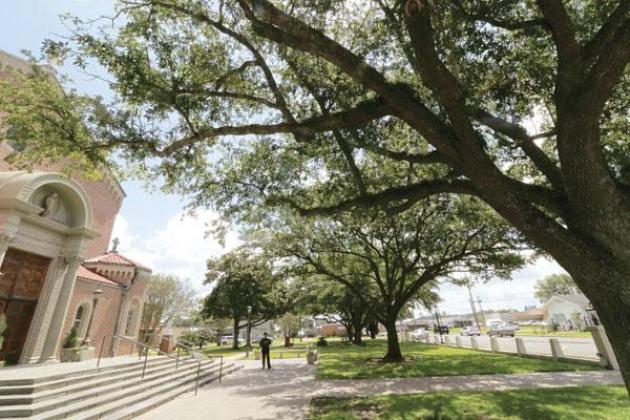
Jim Bradshaw
There’s no record of what the ancient settlers of Louisiana thought about Louisiana’s live oaks, but poets and travelers have written about their majesty and beauty since they first arrived with pen and paper.
Longfellow wrote of a river “o’ershadowed by oaks, from whose branches garlands of Spanish moss and of mystic mistletoe flaunted.” In 1890, Tulane professor Alcée Fortier was so taken by “the tranquil waters of the Teche, its banks covered with moss-grown live-oaks,” that he began to “imagine what must have been the feelings of the Acadians when they saw for the first time ... the beautiful Attakapas country. “
The noted Louisiana writer Harnett T. Kane traveled across south Louisiana more than once in the 1940s and found “patriarchs in stately rows, long files for several miles; double avenues, with branches arching high above the heads of passers-by, leaves mingling with leaves.”
The huge old trees so impressed Edwin L. Stephens, the first president of the Southwestern Louisiana Industrial Institute (UL today) that he created a Live Oak Society made up of the trees themselves. Its membership was limited to centenarians — oaks 100 years old or older.
Stephens first suggested creation of the society in an article in the Louisiana Conservation Review in April 1934 titled “I Saw in Louisiana a Live Oak Growing” (taken from Walt Whitman’s poem). “I have been considering the live oak for some time and am coming to believe that the world does not realize what a splendid possession it holds in this tree,” Stephens wrote.
He’d talked with tree experts who estimated that a tree had to be at least 17 feet in girth to be 100 years old, and he set that as the criterion for membership when he selected 43 oaks as charter members of the society in 1934. Each tree in the organization was given an “attorney” or sponsor to act as its guardian.
The trees once paid dues of 25 acorns per year and could be expelled for such offenses as whitewashing or bearing advertising. In fact, a group of trees was once “tried” by Judge Horace White of Alexandria for whitewashing, but were not expelled on the grounds that the trees did not apply the whitewash themselves.
Under the bylaws, the largest oak in the society holds rank as president, with such things decided at “semi-occasional meetings.” The Locke Breaux Oak in Taft was the first president, but it fell victim to air and water pollution in 1968. The current president is the stately Seven Sisters Oak in Mandeville. It’s got a 38-foot waistline and the experts think it may be 1,200 years old.
The first vice president is Middleton Oak in Charleston, South Carolina, with a girth of 31 feet. The second vice president is the St. John Cathedral Oak in Lafayette, measuring 27 feet. The Lagarde Oak in Luling is third vice president and measures 29 feet. The Martha Washington Oak in Audubon Park in New Orleans is fourth vice president and measures 28 feet in girth.
The notarial signature on the society’s first constitution and bylaws note that they were “done before me, the Robert Martin Live Oak, at my official position at the front gate of Southwestern Louisiana Institute, this first day of February, AD 1935, in the presence of the Stanley Martin Live Oak (set out February 22, 1919, and also of seventeen Twentieth Century live oaks beside myself (set out January 1, 1901) together with one hundred other small live oaks on the Southwestern campus.” Those oaks planted by Stephens to surround the main UL campus are now 100 years old and eligible for membership.
The Louisiana Garden Club Federation now oversees the society and the list of 43 trees originally proposed by Stephens has grown to more than 8,000 trees across the country. You can find out how to measure and nominate your big tree or more about the society on the federation web site.
A collection of Jim Bradshaw’s columns, Cajuns and Other Characters, is now available from Pelican Publishing. You can contact him at jimbradshaw4321@gmail.com or P.O. Box 1121, Washington LA 70589.
